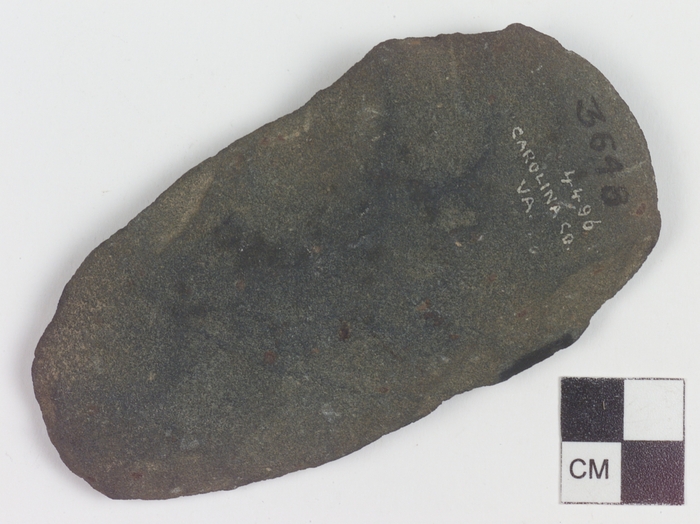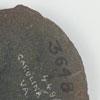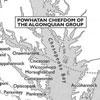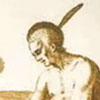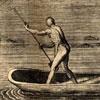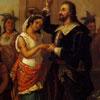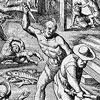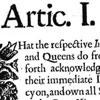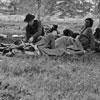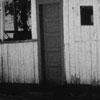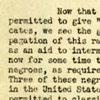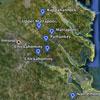Historians and anthropologists generally have to rely on non-textual sources to learn about American Indians in the eras before contact with Europeans. Artifacts are objects that are primarily shaped or produced by human action. This stone blade dates from between 500 and 1600 CE, and was found some time before 1904, when it was purchased by George Heye – a New York collector who amassed a personal warehouse of 58,000 American Indian objects that currently make up the foundation of the Smithsonian’s National Museum of the American Indian. As you examine this object, consider what questions you might ask about it to better understand American Indians’ lives in the past.
The centuries before sustained contact between American Indian and European groups are referred to as the Late Woodland period (ca. 900 CE – 1500 CE) and the Protohistoric period (ca. 1500 CE – 1607 CE). The Protohistoric period was marked by occasional contact with Europeans and provides scholars with some textual evidence, but much of what we know derives from objects. Some central questions to ask of these artifacts are:
• What is it?
• Where is it now and how did it get there?
• When was it created?
• What was the object’s function (or functions)? Was it unique?
• Who made, owned, or used the object?
This object, for example, is made of stone that was flaked or chipped at the edges to form a blade that could be used for farming. Virginia Indians didn’t have access to iron, and so they relied on such stone tools, used in concert with controlled burning and agricultural techniques, to cultivate crops such as corn, squash, and beans.
Historians and anthropologists studying material objects also examine other kinds of evidence, such as writing, to understand the larger context. For example, we may learn about the function of a wooden implement excavated in the ruins of a 17th-century village only by reading a story or diary that describes its use. We know, for example, that this hoe blade would have been used primarily by Virginia Indian women because women did most farming, thanks to evidence from European travel accounts and oral histories. Conversely, seeing an object helps us understand a written description.
Through careful analysis of many types of evidence to corroborate and provide multiple perspectives on the past, we can learn a great deal about Virginia Indian societies of the past and of today.
Source: “Hoe Blade,” object, AD 500-1600, National Museum of the American Indian, accessed November 19, 2018.


